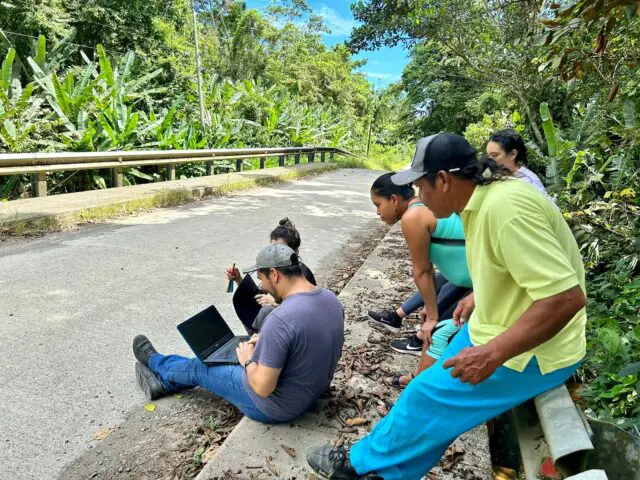The Minister of Justice and Peace, Gerald Campos, recognized on August 19 the farms proposed by the indigenous representation to form a new Ngäbe Indigenous territory in Sixaola de Talamanca.
The rapprochement initiative is part of the commitment assumed by the Government of the Republic on August 9, within the framework of the International Day of Indigenous Peoples, following the visit made by a delegation of the Ngäbe people to the Government to peacefully demand their territory.
Thalía Jiménez, from the MeriDirikä Association of Ngäbe Women of Sixaola, mentioned that on September 2 the minister went to the area to sit down with them to see the possible lands that is going to be granted.
“Based on Convention 169, by right they should give us the land for our custom and tradition. We are asking for a little of how much it has taken from us,” Jiménez said.
In the fight for their rights
Last August, the Socio-Environmental Kiosks Program took the same tour as the minister to evaluate with the community the state and conditions of the farms. In addition to Jiménez, Federico Abrego of the Association of Indigenous People of SixaolaNgäbe (ATIGUSI) and NicolásGonzáles of the Association of Related Indigenous Producers Workers of Sixaola (ATPIS), were part of the journey that took place on the tour.
Abrego declared: “I think the Government is very clear about what we are demanding, we are not asking for anything that is not written, but it is something that is our right, the United Nations declarations say it very clearly as well.”
Living peacefully in the future
For his part, Gonzáles assures that his interest is “to have our own territory where we can live peacefully in the future, also thinking that we have many children born in Costa Rica and that they deserve their lands now free of anything else.”
In a letter presented in March, they reminded President Rodrigo Chaves that in his political campaign he committed to realizing this urgent aspiration, since “currently the people of Sixaola live in a situation of poverty and, furthermore, we cannot develop our culture with dignity due to to the territorial limitation that prevents us from living freely as a native people”.

After years of struggle, the community managed to have the Legislative Assembly approve the Law of Protection of the Right to Nationality of the Indigenous Person and Guarantee of Integration of the Cross-border Indigenous Person (Law No. 9710) in 2019, where it was granted full right to Costa Rican nationality, as they are an indigenous people prior to the constitution of the Costa Rican and Panamanian nations and borders.
They consider that this law was an important step to make their existence visible and to be able to exercise their rights, but now the main problem, which they made known in said letter to President Chaves, is the lack of a territory in which we can live freely, without fear that the way of traditional cultural coexistence will be trampled”.
“More than 10,000 indigenous Ngäbe people from Sixaolaare aiming for spaces to practice their ancestral beliefs of Mama Tata, dances, traditional medicine, the production of crafts, spaces to grow their food and others,” concluded Jiménez.

